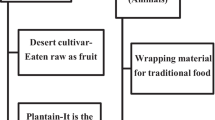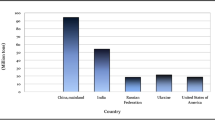Abstract
Sweet sorghum is an attractive feedstock for ethanol production. The juice extracted from the fresh stem is composed of sucrose, glucose, and fructose and can therefore be readily fermented to alcohol. The solid fraction left behind, the so-called bagasse, is a lignocellulosic residue which can also be processed to ethanol. The objective of our work was to test sweet sorghum, the whole crop, as a potential raw material of ethanol production, i.e., both the extracted sugar juice and the residual bagasse were tested. The juice was investigated at different harvesting dates for sugar content. Fermentability of juices extracted from the stem with and without leaves was compared. Sweet sorghum bagasse was steam-pretreated using various pretreatment conditions (temperatures and residence times). Efficiency of pretreatments was characterized by the degree of cellulose hydrolysis of the whole pretreated slurry and the separated fiber fraction. Two settings of the studied conditions (190 °C, 10 min and 200 °C, 5 min) were found to be efficient to reach conversion of 85–90%.





Similar content being viewed by others
References
Negro, M. J., Solano, M. L., Ciria, P., & Carrasco, J. (1999). Bioresource Technology, 67, 89–92. doi:10.1016/S0960-8524(99)00100-5.
Sree, N. K., Sridhar, M., Rao, L. V., & Pandey, A. (1999). Process Biochemistry, 34, 115–119. doi:10.1016/S0032-9592(98)00074-0.
Worley, J. W., Vaughan, D. H., & Cundiff, J. S. (1992). Bioresource Technology, 40, 263–273. doi:10.1016/0960-8524(92)90153-O.
Gnansounou, E., Dauriat, A., & Wyman, C. (2005). Bioresource Technology, 96, 985–1002. doi:10.1016/j.biortech.2004.09.015.
Laopaiboon, L., Thanonkeo, P., Jaisil, P., & Laopaiboon, P. (2007). World Journal of Microbiology & Biotechnology, 23, 1497–1501. doi:10.1007/s11274-007-9383-x.
Antonopoulou, G., Gavala, H. N., Skiadas, I. V., Angelopoulos, K., & Lyberatos, G. (2008). Bioresource Technology, 99, 110–119. doi:10.1016/j.biortech.2006.11.048.
Schmidt, J., Sipocz, J., Kaszás, I., Szakács, G., Gyepes, A., & Tengerdy, R. P. (1997). Bioresource Technology, 60, 9–13. doi:10.1016/S0960-8524(97)00003-5.
Monti, A., & Venturi, G. (2003). European Journal of Agronomy, 19, 35–43. doi:10.1016/S1161-0301(02)00017-5.
Monti, A., Di Virgilio, N., & Venturi, G. (2008). Biomass and Bioenergy, 32, 216–223. doi:10.1016/j.biombioe.2007.09.012.
Belayachi, L., & Delmas, M. (1997). Industrial Crops and Products, 6, 229–232. doi:10.1016/S0926-6690(97)00012-5.
Palmqvist, E., Hahn-Hägerdal, B., Galbe, M., Larsson, S., Stenberg, K., Szengyel, Z., et al. (1996). Bioresource Technology, 58, 171–179. doi:10.1016/S0960-8524(96)00096-X.
Martin, C., Galbe, M., Wahlbom, C. F., Hahn-Hägerhahl, B., & Jönsson, L. J. (2002). Enzyme and Microbial Technology, 31, 274–282. doi:10.1016/S0141-0229(02)00112-6.
Sluiter, A. (2006). Determination of structural carbohydrates and lignin in biomass. Laboratory Analytical Protocol, National Renewable Energy Laboratory, Golden, CO.
Sluiter, A. (2005). Determination of sugars, byproducts, and degradation products in liquid fraction process samples. Laboratory Analytical Protocol, National Renewable Energy Laboratory, Golden, CO.
Veiga, M. C., Soto, M., Méndez, M., & Lema, J. M. (1990). Water Research, 24, 1551–1554. doi:10.1016/0043-1354(90)90090-S.
Mandels, M., Andreotti, R., & Roche, C. (1976). Biotechnology and Bioengineering Symposium, 6, 21–33.
Berghem, L. E. R., & Pettersson, G. (1974). European Journal of Biochemistry, 46, 295–305. doi:10.1111/j.1432-1033.1974.tb03621.x.
Hoffmann-Thoma, G., Hinkel, K., Nicolay, P., & Willenbrink, J. (1996). Physiologia Plantarum, 97, 277–284. doi:10.1034/j.1399-3054.1996.970210.x.
Amaducci, S., Monti, A., & Venturi, G. (2004). Industrial Crops and Products, 20, 111–118. doi:10.1016/j.indcrop.2003.12.016.
Kresovich, S., & Henderlong, P. R. (1984). Energia na Agricultura, 3, 145–153. doi:10.1016/0167-5826(84)90017-2.
Overland, R. P., & Chornet, E. (1987). Philosophical Transactions of the Royal Society of London. Series A: Mathematical and Physical Sciences, 321, 523–536. doi:10.1098/rsta.1987.0029.
Ballesteros, M., Oliva, J. M., Negro, M. J., Manzanares, P., & Ballesteros, I. (2004). Process Biochemistry, 39, 1843–1848. doi:10.1016/j.procbio.2003.09.011.
Palmqvist, E., & Hahn-Hägerdal, B. (2000). Bioresource Technology, 74, 25–33. doi:10.1016/S0960-8524(99)00161-3.
Ramos, L. P. (2003). Quimica Nova, 26, 863–871.
Szengyel, Z., Zacchi, G., & Réczey, K. (1997). Applied Biochemistry and Biotechnology, 63–65, 351–362. doi:10.1007/BF02920437.
Kötter, P., & Ciriacy, M. (1993). Applied Microbiology and Biotechnology, 38, 776–783. doi:1007/BF00167144.
Acknowledgment
This work was financially supported by National Research and Development Programs (NKFP OM00152/2005) and the Hungarian National Research Fund (OTKA–K 72710). Guido Zacchi is gratefully acknowledged for the possibility of steam pretreatment. Enzymes were kindly donated by Novozymes A/S (Bagsvaerd, Denmark). Research Institute, Karcag is acknowledged for the sweet sorghum samples.
Author information
Authors and Affiliations
Corresponding author
Rights and permissions
About this article
Cite this article
Sipos, B., Réczey, J., Somorai, Z. et al. Sweet Sorghum as Feedstock for Ethanol Production: Enzymatic Hydrolysis of Steam-Pretreated Bagasse. Appl Biochem Biotechnol 153, 151–162 (2009). https://doi.org/10.1007/s12010-008-8423-9
Received:
Accepted:
Published:
Issue Date:
DOI: https://doi.org/10.1007/s12010-008-8423-9




